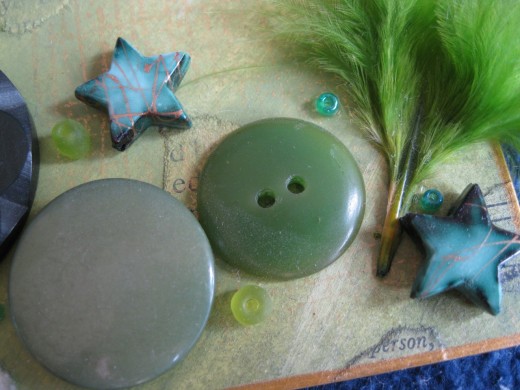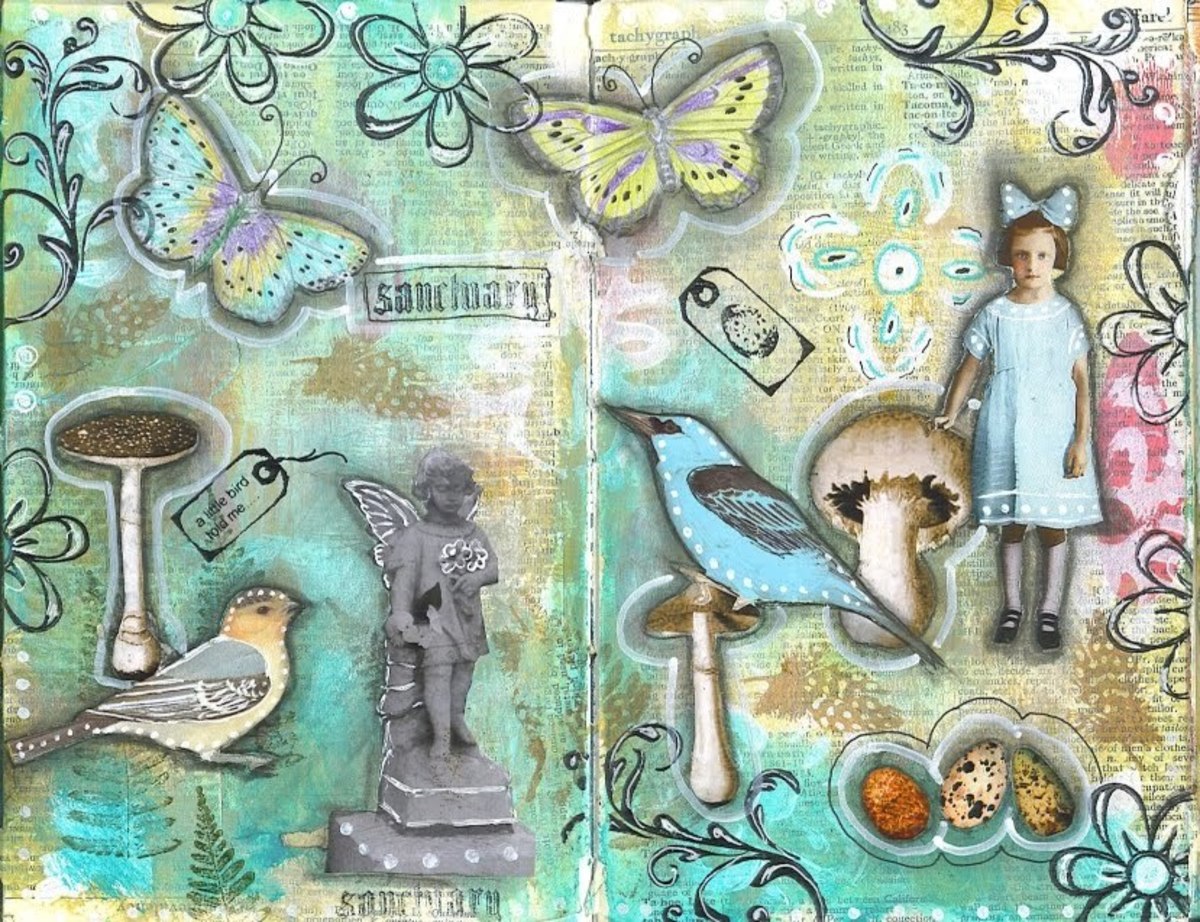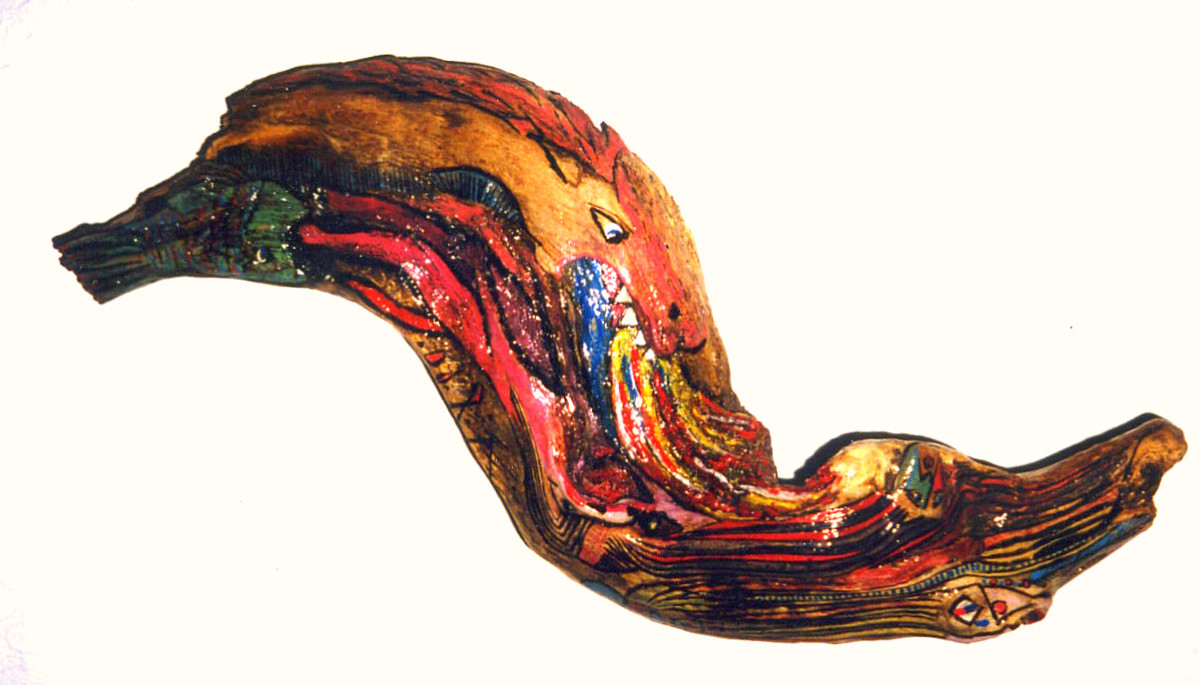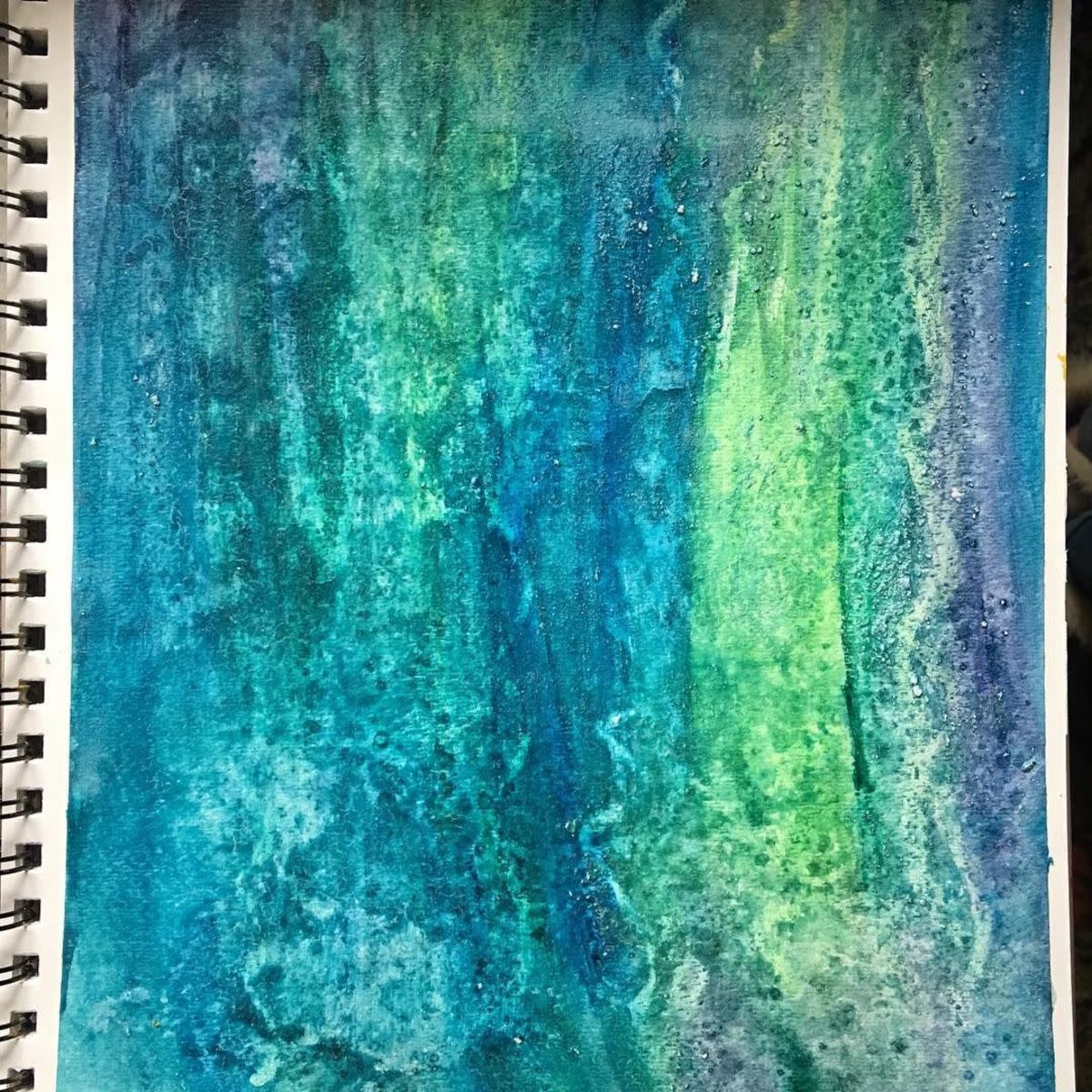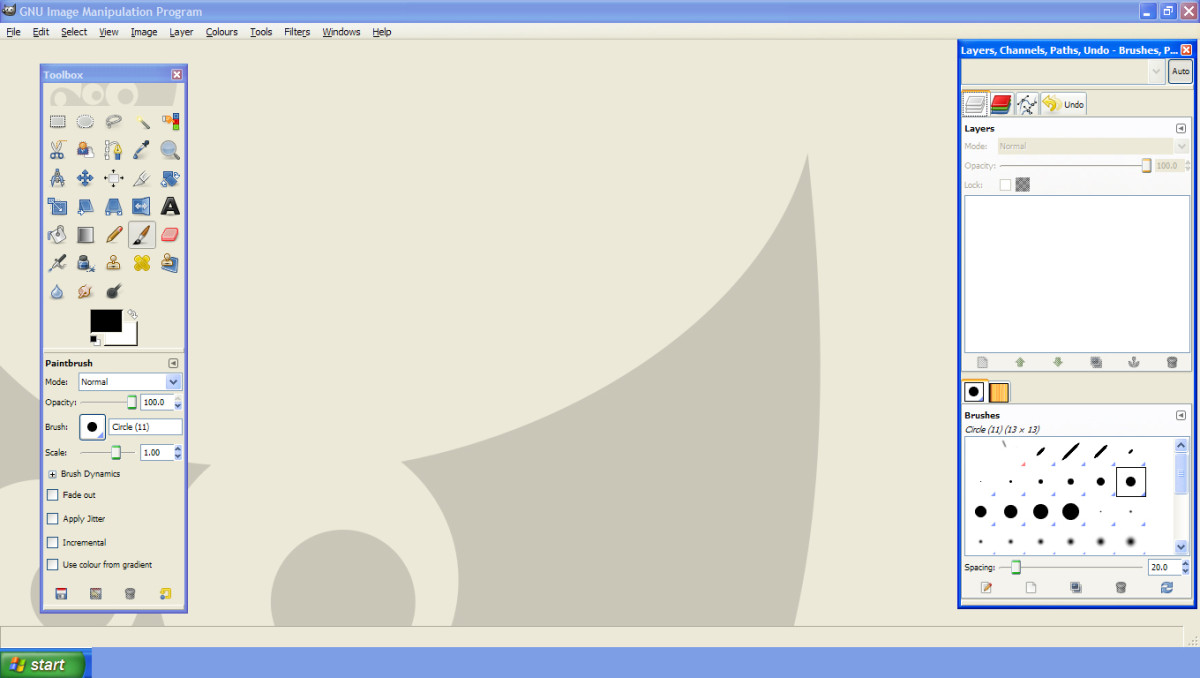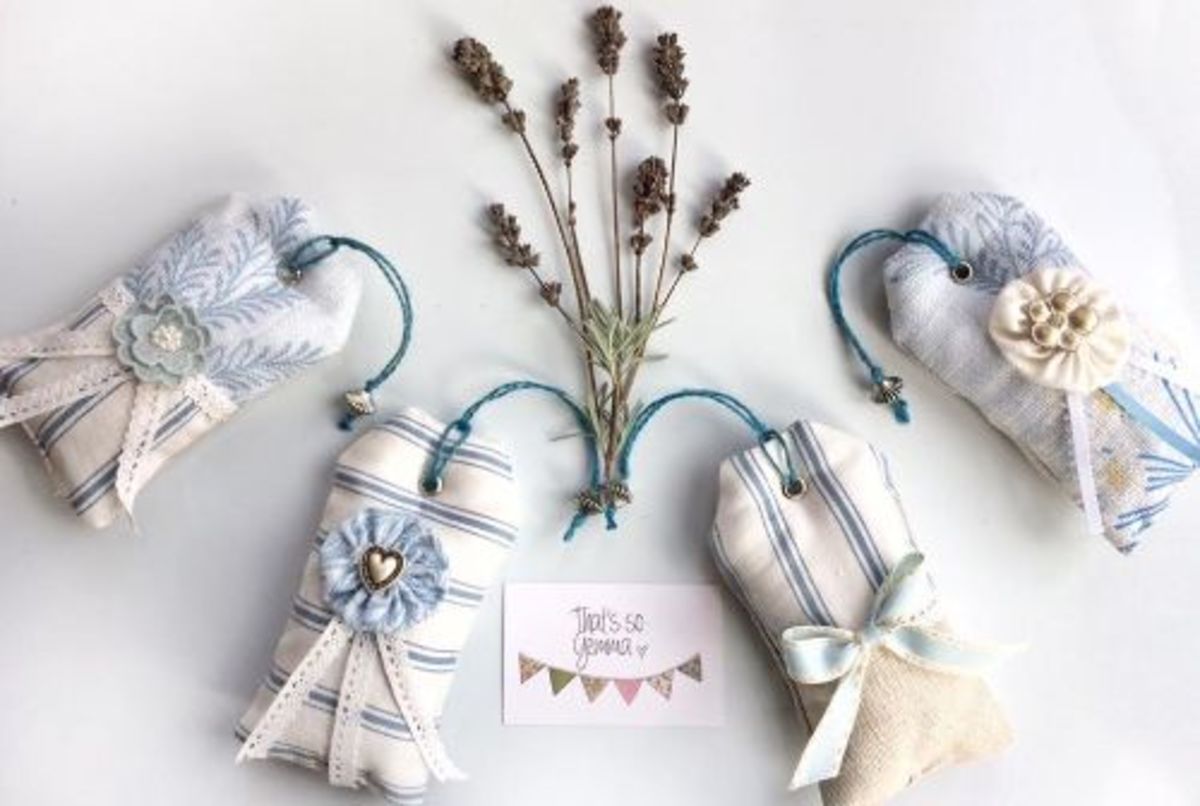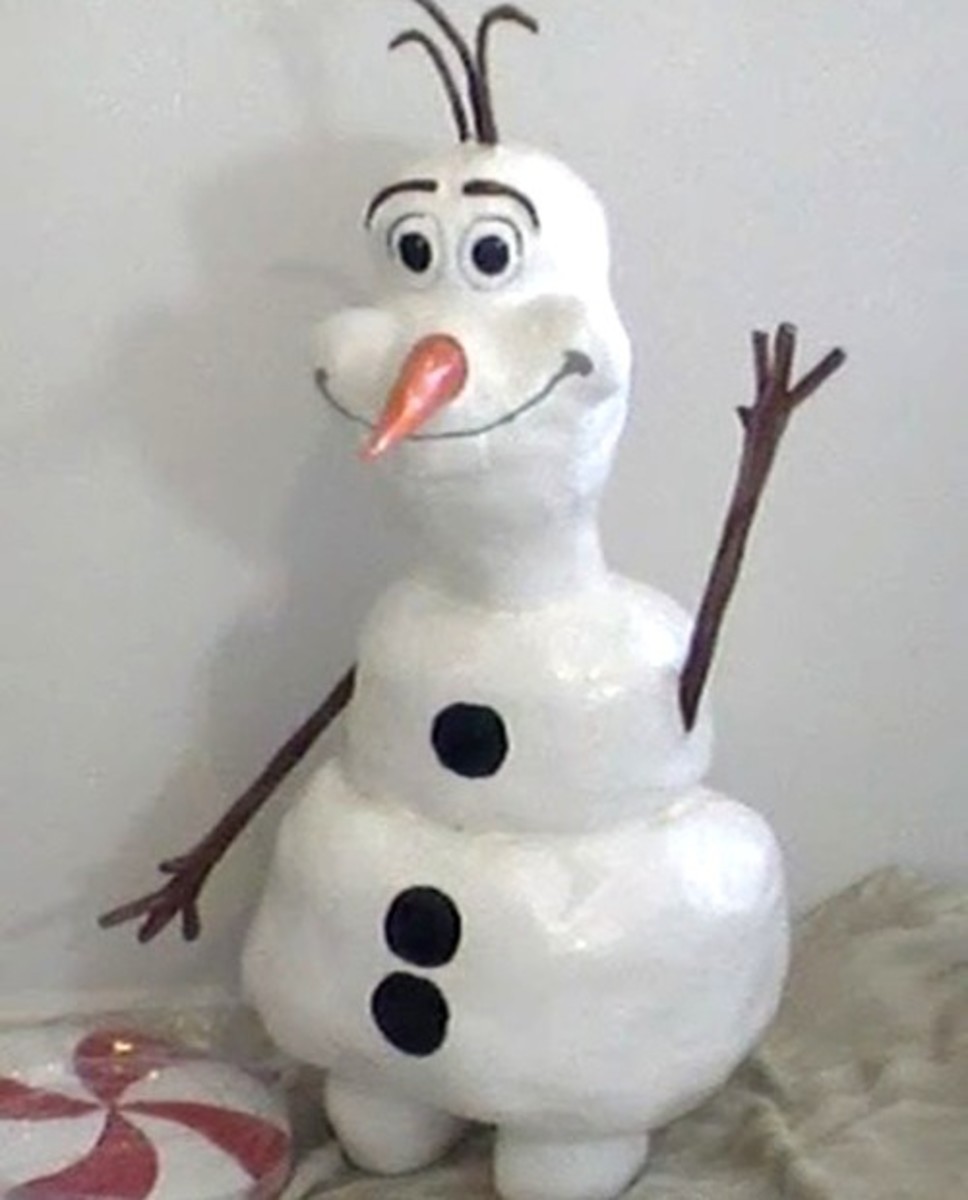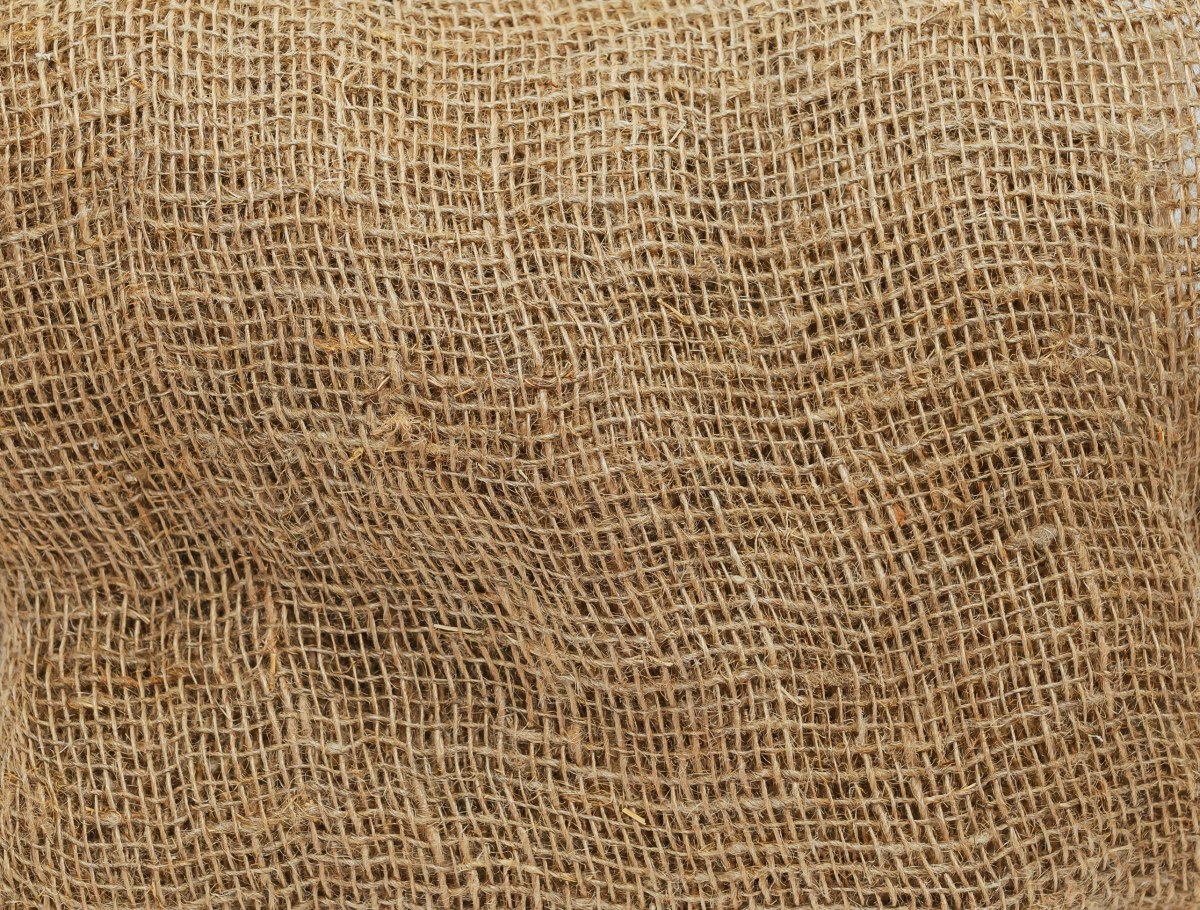Why create layers in your mixed media art?
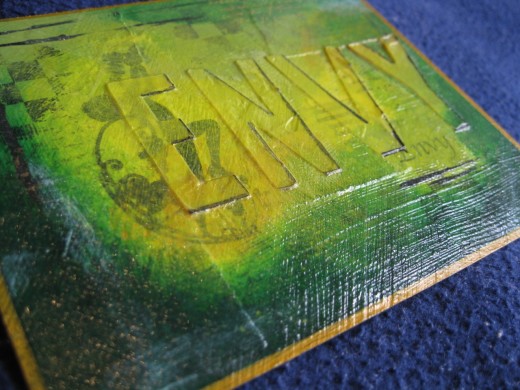
Introduction
Richness and depth in mixed media art is created by having many layers. There are bits peeking through, words hidden, words to read, images to help tell our stories. To create a cohesive piece of artwork, getting these layers together is the challenge.
The Layers Beneath
While the first few layers of artwork may not be seen it is still an important place to start. Consider the substrate you are working on. If it is canvass board or a panel you have a smooth surface to start. If you're working with rough cardboard or an altered book than we need to start covering the background to get ready to add our layers. Gesso is always a great place to start. While it is still wet we can use a skewer to mark text and images. Often these markings will still be visible after our layers after artwork a complete. Always allow these first layers to dry completely.
If you are looking for a rough texture, this is a good stage to act and impasto medium, which is like a thick glue that can be formed and texture added to it. It can also be used to imbed an image or other raised area in your artwork. Leave the piece overnight to dry completely.
Ephemera is another good layout to include at the start. It can be added before or after the first layer of gesso. Adding the ephemera and then the gesso helps to type the background together. It evens out the different colours of the paper. Adding the ephemera on top of the gesso makes that layer more prominent when the piece is complete.
These layers beneath create the foundation and interest to our final piece. Some may be hidden and maybe seen. We know they are there and help us to tell our story.
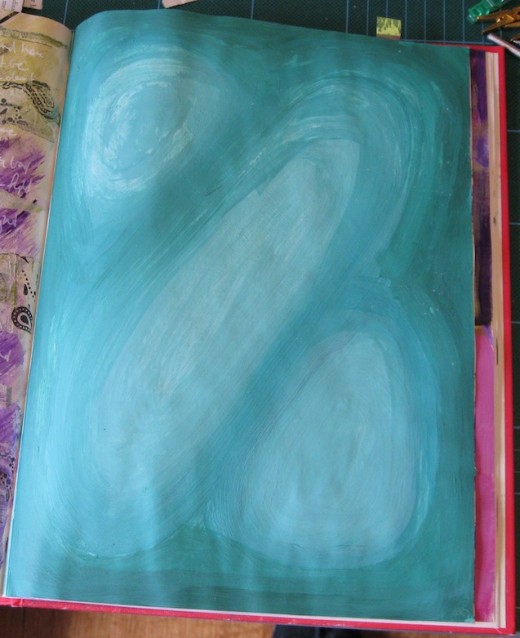
The Middle Layers
This is where we add out colour throughout paints. If you are just getting started then choose two or three colours that you know work well together. Two shades of blue plus a white or a cream are a good combination for those who are bit timid with choosing colours. Add layers of colour slowly blending between the two shades. You can also remove the paint if it is getting too thick and obscuring the background.
There are many different ways to add paint to mixed media arts. You need to experiment with the method that gives you the results you looking for. Some artists will use thick paint and blend them right on the canvas while the paint is still wet. Other artists will use thin washes and allow each layer to dry before adding the next colour.
These middle layers add the colour and the richness of a mixed media piece. Have fun with these layers. The challenge is knowing when to stop. And that comes through experience and play.
The Top Layers
When you are happy with your background and colours of your mixed media piece, we're ready to add the finishing touches in the top later. This may be an image or words to help tell a story, or free writing. You could including embellishments like buttons or stickers.
Also consider if you need to seal your piece with varnish. If you're concerned with any of your layers smudging than a spray varnish is a good way to seal the piece before adding the embellishments. Once the varnish is dry you will need to heat set any other writing or text or marks put on top, to make sure that they dry properly.
These top layers complete out art work. They are used to highlight the areas of the middle and lays underneath. They tell the final piece of the story.
Now Admire Your Work
Now you can stand back and admire your work. It may have been created in an afternoon or over several days or many weeks. I hope you enjoyed the process of creating these layers. Remember to note your process in your art journal, making what worked and what didn't work so well. From a all it takes is more practice and your own unique style will begin to emerge.
Happy creating.
